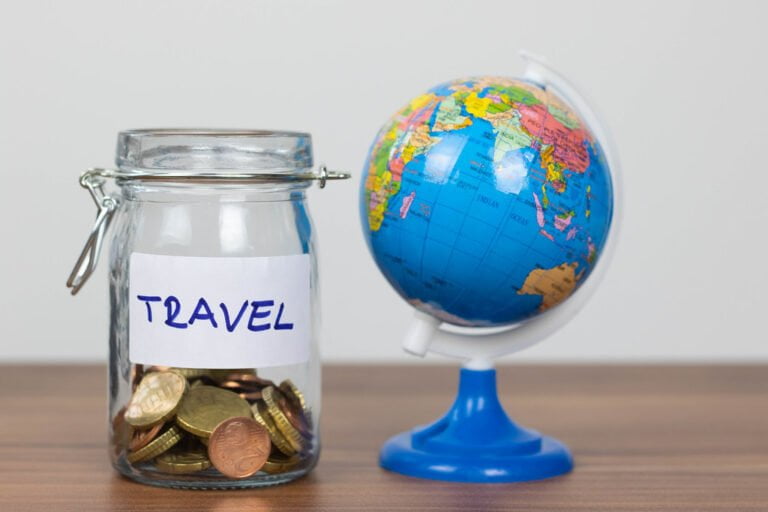Should I Bring Cash to Asia?
When traveling to Asia, it's essential to have a mix of cash and credit cards, as while major credit cards are widely accepted in urban centers, cash remains the dominant form of payment in rural areas and many local markets. In cash-dependent countries like Cambodia, Laos, and Myanmar, cash is often the only form of payment accepted. In cities, credit cards are widely accepted, but it's still vital to have local currency for small purchases and local experiences. By understanding the nuances of cash and credit card acceptance, you can navigate Asia's diverse economies with confidence – and explore more about managing your money in Asia.
Cash-Dependent Countries in Asia
Roughly half of Asia's countries, including Cambodia, Laos, and Myanmar, remain heavily cash-dependent, with a significant portion of their populations lacking access to formal banking systems. This reality can pose a challenge for travelers, who may find it difficult to access cashless payment options. In these countries, cash is king, and visitors should be prepared to carry sufficient amounts to cover their expenses.
In rural areas, cash is often the only form of payment accepted, and ATMs may be scarce. Even in urban centers, credit card machines may be unreliable or unavailable. Travelers should plan ahead and exchange their money upon arrival or withdraw cash from an ATM as soon as possible. It's also essential to have some local currency, such as the Cambodian riel or Lao kip, for small purchases and transactions.
When traveling to cash-dependent countries in Asia, it's vital to be mindful of your spending and budget accordingly. Avoid relying on credit cards or mobile payments, and instead, focus on managing your cash flow. By being prepared and flexible, you can navigate the cash-based economies of these countries with ease. Remember to always have some cash on hand, especially for small transactions, and don't assume that credit cards will be widely accepted. With some planning and preparation, you'll be well-equipped to handle the cash-dependent economies of Asia.
When traveling to cash-dependent countries in Asia, it's essential to be mindful of your spending and budget accordingly. Avoid relying on credit cards or mobile payments, and instead, focus on managing your cash flow. By being prepared and flexible, you can navigate the cash-based economies of these countries with ease.
Credit Card Acceptance in Cities
In contrast to rural areas, urban centers in Asia, such as Bangkok, Singapore, and Kuala Lumpur, offer a more modern and connected infrastructure, where credit card acceptance is more widespread and convenient. Major cities in Asia have largely adopted digital payment systems, making it easier for travelers to use their credit cards for transactions. From high-end shopping malls to street food stalls, many businesses in urban areas accept major credit cards like Visa, Mastercard, and American Express.
In cities, you can expect to find ATMs and currency exchange services readily available, making it easy to access local currency when needed. Many restaurants, cafes, and shops display signs indicating which credit cards they accept, making it simple to identify where you can use your card. Additionally, ride-hailing services like Grab and Go-Van often accept credit card payments, making it convenient to get around the city.
For travelers, this means that carrying large amounts of cash is not necessary in urban areas. Instead, you can rely on credit cards for most transactions, reserving cash for smaller purchases or at traditional markets. However, it's still a good idea to have some local currency on hand for incidentals or situations where credit cards may not be accepted. Overall, urban centers in Asia offer a convenient and modern payment infrastructure, making it easy for travelers to navigate with credit cards.
Rural Areas and Cash Economy
As you venture into rural Asia, you'll find that cash is king, and access to ATMs becomes increasingly scarce. In these areas, local markets thrive, and vendors often rely on cash transactions, making it essential to have a sufficient amount of local currency on hand. Be prepared to adopt a cash-based lifestyle, where digital payments are few and far between.
Limited ATM Access
Will you be stranded without cash in rural Asia, where ATMs are scarce and the cash economy reigns supreme? The answer is a resounding yes, if you're not prepared. In rural areas, ATMs can be few and far between, leaving travelers scrambling to find a way to access their money. This is especially true in countries like Cambodia, Laos, and Myanmar, where the banking infrastructure is still developing.
In these areas, cash is king, and vendors, restaurants, and accommodations often don't accept credit or debit cards. Without a steady supply of cash, you may find yourself unable to pay for necessities, let alone enjoy the local experiences that make travel so rewarding. To avoid this scenario, it's essential to plan ahead and stock up on cash before venturing into rural areas. Consider withdrawing a sufficient amount from an ATM in a larger town or city before heading into the countryside. This will guarantee you have enough cash to last until you can find another ATM, and safeguard you against financial difficulties.
Local Markets Prevail
Rural Asia's vibrant local markets, where colorful vendors sell everything from fresh produce to handmade crafts, operate almost exclusively on a cash-only basis. These bustling hubs of activity are a staple of rural life, and cash is the lifeblood that keeps them thriving. From the fresh vegetables and fruits to the intricately woven textiles, every item is carefully selected and purchased with cash in hand.
When exploring these markets, it's essential to have a sufficient amount of local currency to avoid any inconvenience. Here are three essential items to keep in mind:
- Fresh produce: Fresh fruits and vegetables are abundant in rural markets, and vendors often quote prices in cash-only terms.
- Handmade crafts: Skilled artisans showcase their wares, from hand-woven baskets to intricately carved wooden figurines, all priced in cash.
- Street food: Savor the flavors of rural Asia at street food stalls, where cash is the only accepted payment method.
Digital Payment Systems in Asia
In Asia, digital payment systems have taken a significant leap forward, offering travelers a convenient alternative to cash. Mobile payment options, such as Alipay and WeChat Pay, have become ubiquitous, allowing users to make contactless transactions with ease. As a result, many Asian countries are rapidly shifting towards a cashless society, making digital payments an essential aspect of modern travel in the region.
Mobile Payment Options
Across Asia, digital payment systems have transformed the way people make transactions, with mobile payment options like Alipay, WeChat Pay, and GrabPay dominating the scene. These mobile payment options have made it possible to pay for goods and services with a mere scan of a QR code or a tap on a mobile screen.
In many Asian countries, mobile payment options have become the preferred mode of payment, especially among the younger generation. Here are some key benefits of using mobile payment options in Asia:
- Convenience: Mobile payment options eliminate the need to carry cash or cards, making transactions quick and hassle-free.
- Wide acceptance: Many merchants, from street vendors to high-end retailers, accept mobile payments, making it a widely accepted form of payment.
- Rewards and discounts: Mobile payment apps often offer rewards, discounts, and loyalty programs, which can be a great way to save money.
Contactless Transactions Rise
As digital payment systems continue to evolve, contactless transactions have emerged as a dominant force in Asia, with many countries witnessing a significant shift towards a cashless society. In countries like Japan, South Korea, and Singapore, contactless payment methods such as mobile wallets, credit cards, and wearables have become increasingly popular. These convenient and efficient payment methods have reduced the need to carry cash, making travel and daily transactions seamless.
In China, mobile payment giants like WeChat Pay and Alipay have transformed the way people make transactions, with many merchants accepting only digital payments. In the same vein, in India, mobile wallets like Paytm and Google Pay have gained widespread acceptance. The rise of contactless transactions has not only simplified transactions but also enabled merchants to track sales and inventory more efficiently. As digital payment systems continue to advance, it's clear that cashless transactions will become the norm in Asia, making it essential for travelers to stay informed about the latest payment trends.
Currency Exchange and Withdrawal
When traveling to Asia, one of the most important considerations is how to access local currency, a process that often involves traversing complex exchange rates and withdrawal fees. Understanding the intricacies of currency exchange and withdrawal is vital to guarantee a smooth and hassle-free trip.
- Exchange Rates: Be aware of the current exchange rates to avoid getting ripped off at airport currency exchange booths or local money changers. You can check exchange rates online or use a currency converter app to get the best rates.
- Withdrawal Fees: Be mindful of withdrawal fees associated with using your debit or credit card at local ATMs. Some banks and credit card companies charge exorbitant fees for international transactions, which can add up quickly.
- Daily Withdrawal Limits: Know your daily withdrawal limits to avoid getting stuck without access to cash. Some ATMs may also have their own withdrawal limits, so it's essential to plan ahead and withdraw larger amounts if needed.
Managing Your Money in Asia
Your wallet's contents will fluctuate rapidly in Asia, where haggling vendors, street food stalls, and bustling markets anxiously anticipate your arrival. To manage your money wisely, it's essential to have a strategy in place.
Firstly, prioritize having a mix of cash and credit cards. While many establishments accept credit cards, cash is still king in many Asian countries, particularly in rural areas and at traditional markets. Consider carrying a combination of local currency, USD, and a credit card with no foreign transaction fees.
When exchanging currency, avoid airports and tourist areas, where rates tend to be less favorable. Instead, opt for local banks or currency exchange offices. Additionally, be mindful of your daily ATM withdrawal limits and plan accordingly to avoid running out of cash.
In terms of budgeting, set a daily budget and track your expenses to avoid overspending. Consider using a budgeting app or spreadsheet to help you stay on top of your finances. Finally, make photocopies of your important documents, including your passport and credit cards, and leave them with a trusted friend or family member in case of an emergency.
Additionally, make photocopies of your important documents, including your passport and credit cards, and leave them with a trusted friend or family member in case of an emergency.


